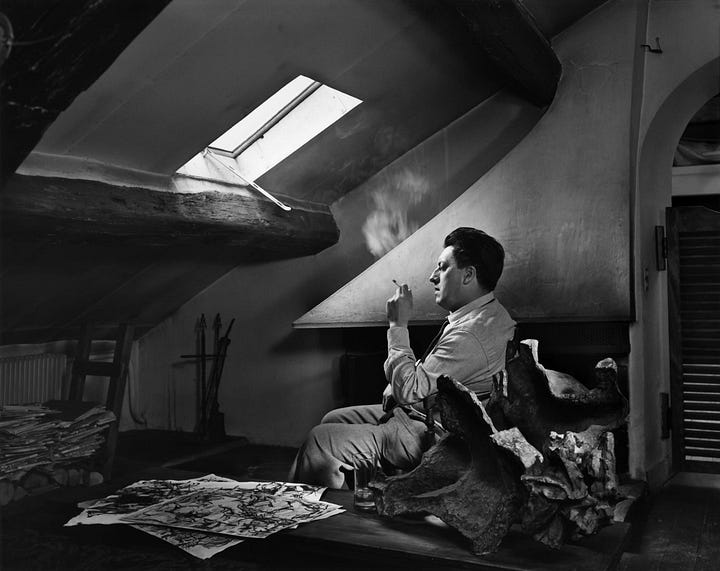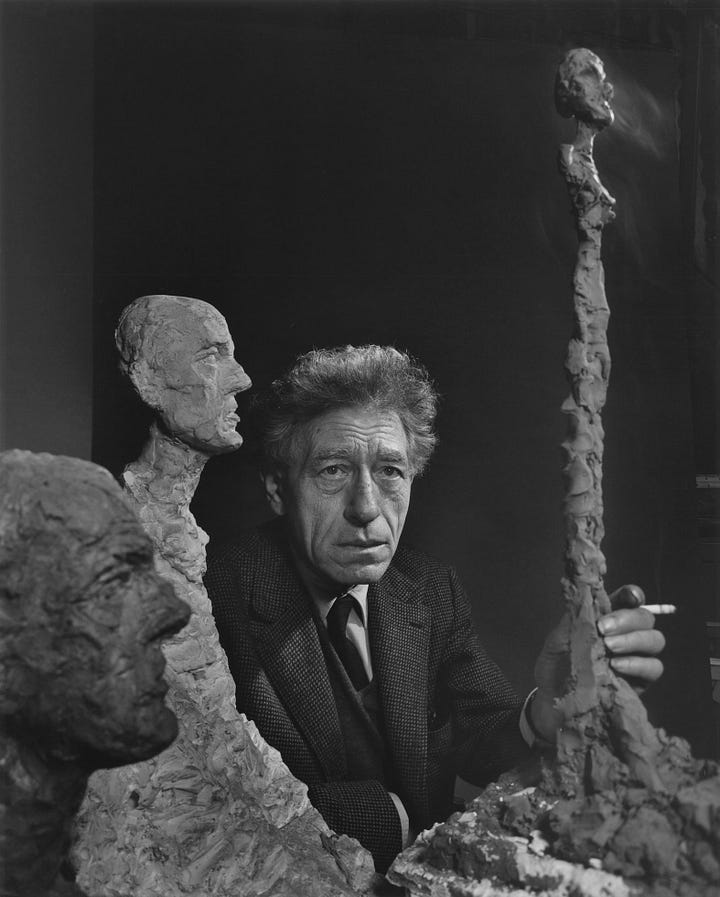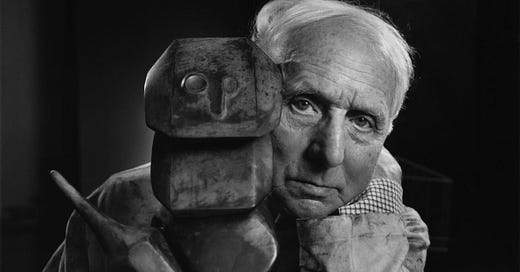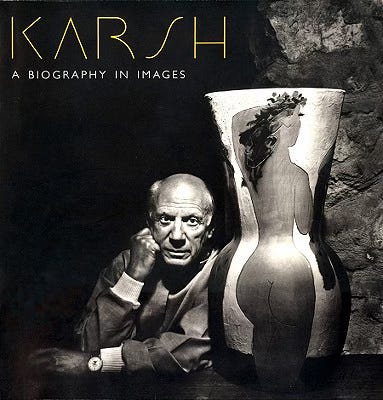I've always loved and appreciated when photographers capture artists in their studios. It’s a special moment because, for many artists, the studio is a sacred space. It’s deeply personal and often vulnerable—a place where ideas can either come together perfectly or be a constant struggle. Letting outsiders into this space is like opening your heart and sharing your truest feelings. So, when an artist invites someone into their studio, there's a certain level of trust involved.
Allowing a photographer to enter and document the studio space is an even more intimate act. When I came across the work of Yousuf Karsh, I was in awe of how he captured his subjects’ presence, especially artists. Karsh had a way of portraying them so naturally that you can sense the artists’ trust in his vision and process. It’s wonderful to witness, and it’s what prompted us to write this article—to perhaps introduce Karsh’s work to those unfamiliar with it.
Yousuf Karsh, a Canadian-Armenian photographer, became one of the most celebrated portrait photographers of the 20th century, capturing images of some of the most iconic figures of his era. With a career spanning over six decades, Karsh's work is widely recognized not only for its technical mastery but for its ability to reveal the character and inner essence of his subjects. Through his remarkable body of work, he left an indelible mark on the world of portrait photography.
Early Life and the Influence of Adversity
Born in 1908 in Mardin, Armenia, Karsh experienced a difficult childhood as his family fled the Armenian genocide to Syria. At 16, he moved to Canada, where he lived with his uncle, George Nakash, a photographer in Sherbrooke, Quebec. Karsh's early experience with hardship and resilience deeply influenced his artistic vision, contributing to the profound empathy that later distinguished his portraits. While apprenticing with his uncle, Karsh found a passion for photography, and by 1931, he moved to Ottawa to start his own studio.
The Essence of a Portrait: Karsh’s Signature Style
Karsh developed a distinct style that blended meticulous lighting, composition, and an ability to create intimacy with his subjects. Unlike many photographers of his time, he didn’t settle for capturing just the appearance of a person. Instead, Karsh sought to bring out the essence, personality, and character of his subjects. To achieve this, he employed strategic lighting to sculpt his subjects' faces and hands, which he believed were central to revealing their true selves.
One of his trademarks was the dramatic use of shadow and light to evoke a sense of depth and dimension, drawing influence from the chiaroscuro techniques used by Renaissance painters. Karsh would set up complex lighting schemes, often using multiple lights, diffusers, and reflectors to achieve his desired effect. This approach allowed him to emphasize certain facial features, creating an almost sculptural quality in his images.


Capturing Icons of the 20th Century
Karsh’s big break came in 1941 when he photographed British Prime Minister Winston Churchill. In a now-iconic image, Karsh captured Churchill in a moment of bold determination, the scowl on Churchill’s face reflecting the stoic resilience of Britain during World War II. The story behind the shot is nearly as famous as the portrait itself: just before taking the picture, Karsh removed Churchill’s cigar, prompting the Prime Minister to look at him with a defiant expression that Karsh quickly captured. This portrait propelled Karsh to international fame, establishing him as a master portraitist of powerful personalities.
Following his portrait of Churchill, Karsh went on to photograph countless artists, including Pablo Picasso, Helen Frankenthaler, Georgia O’Keeffe, Andy Warhol, Max Ernst, Alberto Giacometti, Jean-Paul Riopelle, and Pierre Soulages . These images were more than mere documentation; they were explorations of personality, authority, creativity, and human complexity. By focusing on the eyes, hands, and often the subtle expressions of his subjects, Karsh was able to reveal both their strength and vulnerability.


The Art of Interaction: Building Trust with His Subjects
What set Karsh apart from other photographers was not just his technical skill but his ability to foster an atmosphere of trust and openness. Karsh was known for his skill at putting people at ease, allowing them to relax and let their guard down. He often engaged in conversation with his subjects, learning about their interests and passions, which allowed him to capture more genuine expressions and postures. This rapport helped his subjects reveal their true selves, a quality that Karsh believed to be essential for a powerful portrait.
Karsh also believed in preparation and would spend time researching his subjects before the shoot, learning about their personalities, accomplishments, and quirks. He wanted to connect with them on a human level, seeing beyond their fame or achievements to capture something more universal. In this way, his portraits transcend time, presenting the viewer with a powerful and empathetic glimpse into the souls of his subjects.


Legacy and Influence on Modern Photography
Yousuf Karsh’s impact on photography cannot be overstated. His portraits remain some of the most enduring and iconic images of the 20th century, offering viewers a window into the personalities and lives of influential figures. He pioneered techniques that are still used today, from controlled lighting to the cultivation of rapport with subjects. His work continues to influence photographers across genres, from portrait and fashion to editorial and fine art photography.
Karsh’s legacy lives on in the way that he humanized his subjects, showing them as more than just their public personas. His portraits remind us that each of these individuals, despite their fame or achievements, had a depth and complexity that could only be captured by someone who truly understood the power of photography to reveal the human soul.







